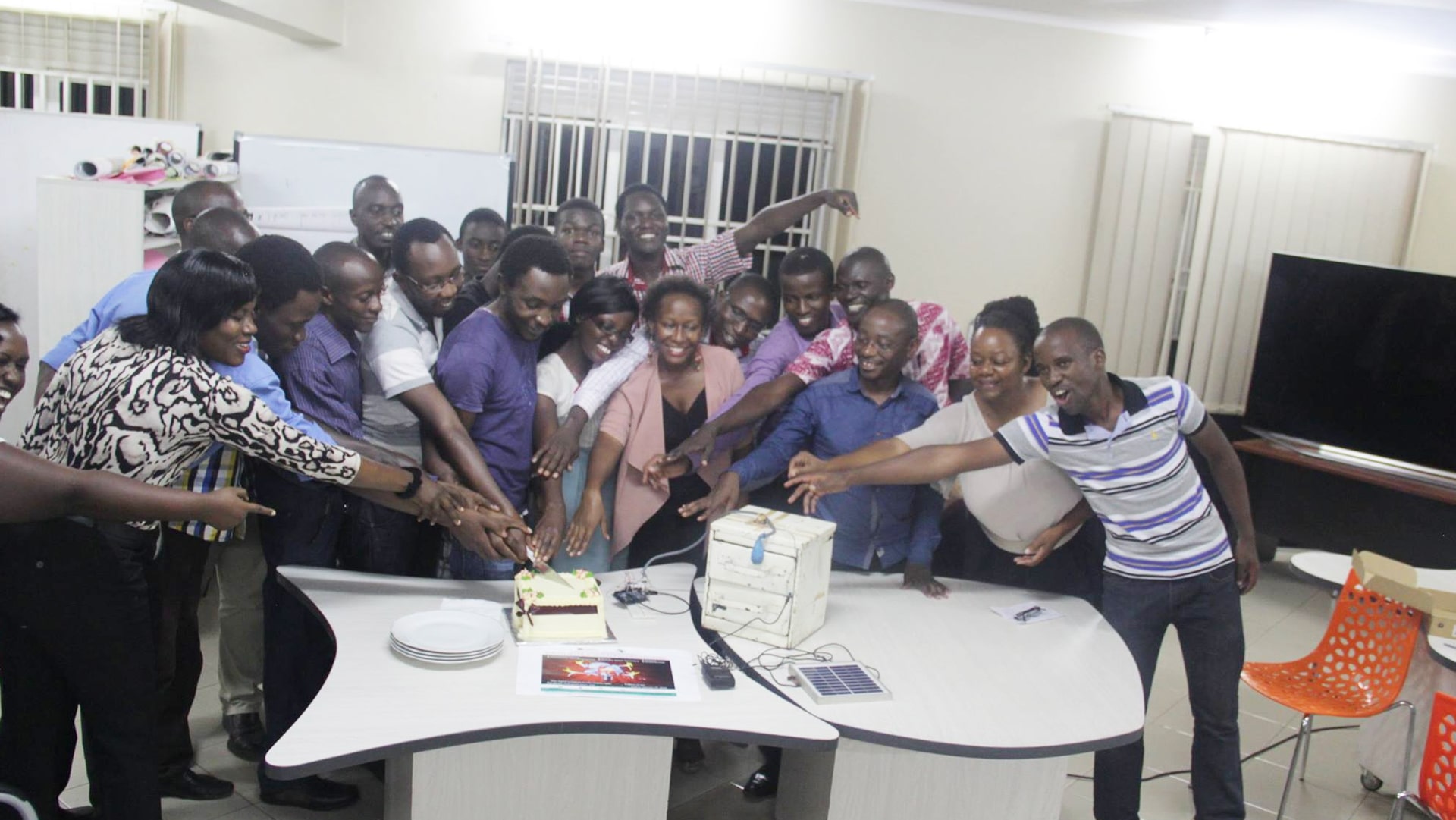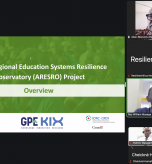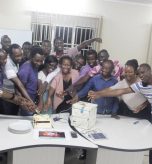
ResilientAfrica Network (RAN) hosted the end of year 2015 Innovation Garage on Friday December 4, 2015 at the RAN Innovation Lab space on Plot 30 Upper Kololo Terrace, Kampala Uganda. The Innovation Garage in partnership with the Innovation Consortium Limited aids bringing innovation to life. The Garage, guided by the theme; “Catalyzing Engineering solutions” drives deep thinking by attendees through interactive brainstorm sessions and experimentation to pursue the best prototypes and solutions.
This monthly event (held every last Friday of the Month) is open to multi-disciplinary persons, students, faculty and the communities at large because at RAN, we realize and appreciate that each discipline contributes significantly to the quality of the Innovation. The Garage is a great platform to support home grown engineering solutions and through these monthly sessions RAN supports local solutions directed towards transcending nations. It brings together students, faculty, researchers, scholars, innovators and the community who join the radical group working on inventing game changing solutions.
The last Garage of the Year 2015 hosted two innovation prototypes, the Pneumonia Vest (MAMA-OPE) and the Solar Egg Incubator.
To kick-start discussions, participants were engaged in sharing lessons learnt, opinions, successes, reviews and areas of improvement from the past Innovation Garages. Participants openly shared as follows;
The positives;
- That the Innovation Garages have been consistent and so far 6 garages had been successfully held. For each of the 6 garages, several projects have been presented and given guidance directed towards further development for the benefit of target communities.
- The Innovation Garage participants are active given that everyone in the garage is an innovator.
- Some physical prototypes of the projects presented in the Innovation Garage session have been fabricated. These include the RootIO Community Radio transmission Mast and the Mechanized Maize Thresher.
- The innovation garage is diverse and handles projects from various fields.
Areas for improvement moving forward;
- The innovation garage should be carried out in an environment that feels like a workshop or garage itself. Right now, it is being carried out in an office setting.
- There is need to document everything that happens in the Innovation Garage. The documentation might be internal like project updates, plans or meant for publicity including briefs or even scientific documentation to be included in journals.
- We should work to create a brand for the Innovation Garage.
- To make the garage sustainable, alternative funding should be solicited.
- The innovation garage should start creating its own projects. These can further be developed and supported to positively impact communities.
- All Innovation Garage projects should be tracked and progress reports regularly shared.
- Other avenues for innovators including Industries in Katwe and Kisenyi in Kampala Uganda and beyond should be reached by the Innovation Garage Team so as to access more innovators.
- Innovation Garage attendance should be improved. The innovation garage requires an audience of at least up to 150 participants. Each participant present was urged to always come along with a friend, colleague or relative among others.
- There should be a structure of people to run the Innovation Garage. Roles should be clearly shared out for the success of the Innovation Garage activities.
- The Innovation Garage should carry out pro bono work as part of its Corporate Social Responsibility (CSR).
- It was noted important that for every project to be presented in the next Innovation Garage session, the Innovation Team should be present in the garage before for learning purposes.
Innovative Projects discussed during this Garage session included the following;
The Pneumonia Kit
This is a kit which will detect pneumonia in young children. The detection process will mainly differentiate pneumonia from malaria or any other fever and will show the percentage chance of the patient suffering from malaria. The percentage chance will be determined basing on the findings of the kit and information acquired from the patient’s mother or care taker.
Areas to ponder on;
- Where should we position the sensors so that they can effectively work? These sensors should be placed in such a way that they can count and tell the number of breaths and the temperature of the infant with great accuracy. May be the sensors could be positioned on the lower parts of the rib cage or stomach.
- Could the sensor be an animal? Animals have been proven to be more sensitive and so such an option should be also be explored.
- The sounds tested are faint, so, how do we ascertain accuracy? Highly sensitive sensors should be used and positioned at a point where they can detect the smallest of the changes. For instance where the inflated balloon like element is used, it should be of a minimal area so that the pressure that results from the movement of the rib cage is detected.
- The need to answer the question; How do we effectively capture chest expansions
- How do we make the vest minimalistic?
- Could we replace the smartphone with other mechanical elements? This is because the smartphones require constant charging to sustain the battery power.
- Could we make the kit more appealing to children so that it is also attractive to the users?
The Solar Powered Egg Incubator
This is a small scale egg incubator whose operations are aided by a solar panel. Eggs are put in the lower tray for three days and then transferred to upper tray. When transferring the eggs, avoid touching them so as not to contaminate the same. The community Innovator behind this project shared that, the last time the Solar Powered Incubator was tested; only two eggs out of six were hatched. It was an interesting and different session since the Innovator openly expressed himself in the local language-‘Luganda’. “This is emphasis that RAN is innovating with the communities” noted Dr. Roy William Mayega, RAN Deputy Chief of Party.
The inspiration of the innovator is to encourage youth to participate in money making ventures and create jobs. His main challenges are that he has not been able to carry out further research about his incubator and he does not have the required materials to fabricate the incubator because of limited funding.
Areas for improvement and some questions for the Innovator;
- How do we regulate the temperature within the incubator?
- Aren’t there huge heat losses from the incubator? This needs to be verified and addressed where necessary
- Instead of carrying the eggs from one tray to another, why isn’t the mechanism that the operator shifts the whole tray?
- Could we improvise using other heating modes?
- Apart from the solar powering, are there any other enticements to procure the incubator?
“It is always encouraging to witness the continued rising energy levels in these sessions, even when it is late, beyond the hour 6:00 pm EAT, discussions continue until the last mile” shared one observer at the Innovation Garage. To crown the two sessions, the RAN team, Innovators, Innovation Consortium Limited Team, student interns and students joined hands to cut the 2016 Christmas cake to celebrate the last garage of the year 2015. The cake was an offer from Stephen Ssekanyo, an innovator working on a project Kungula Thresh it! a project under incubation at RAN.







